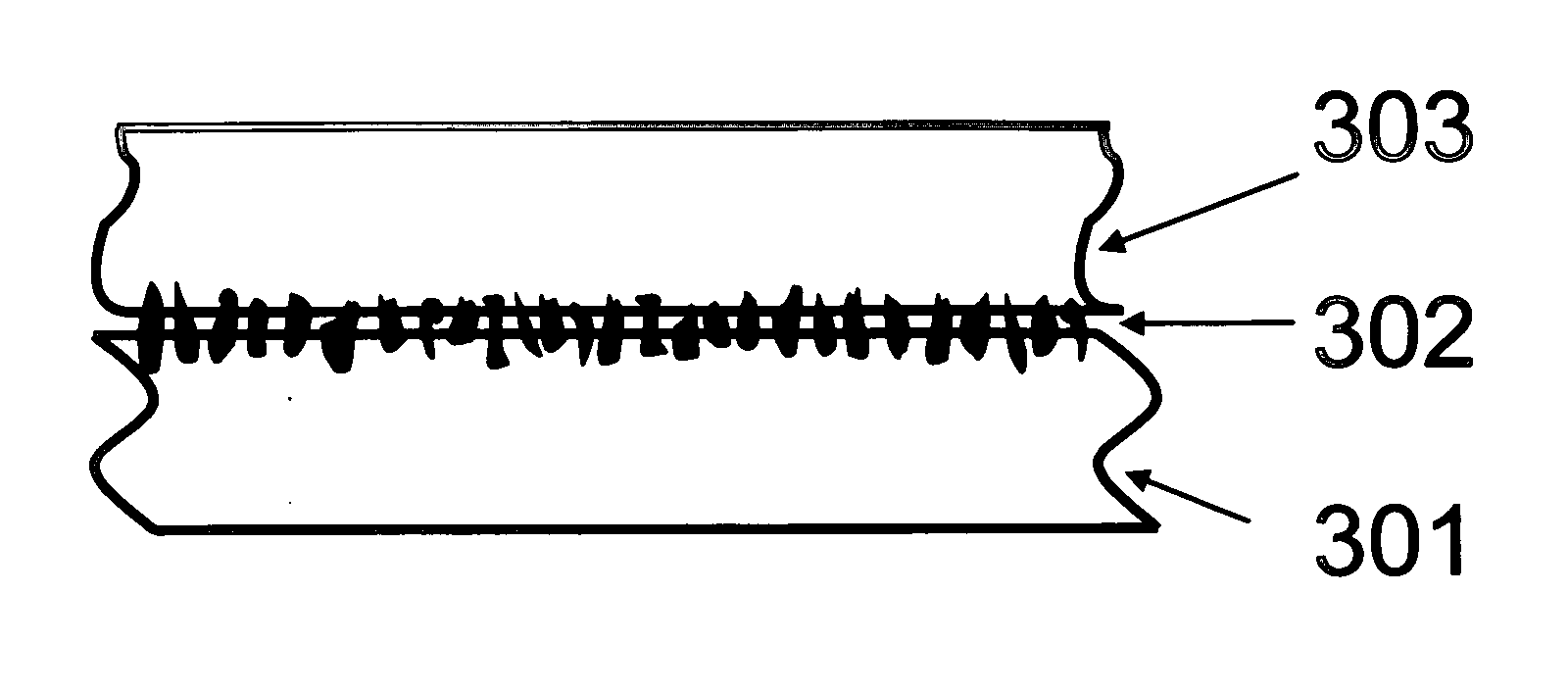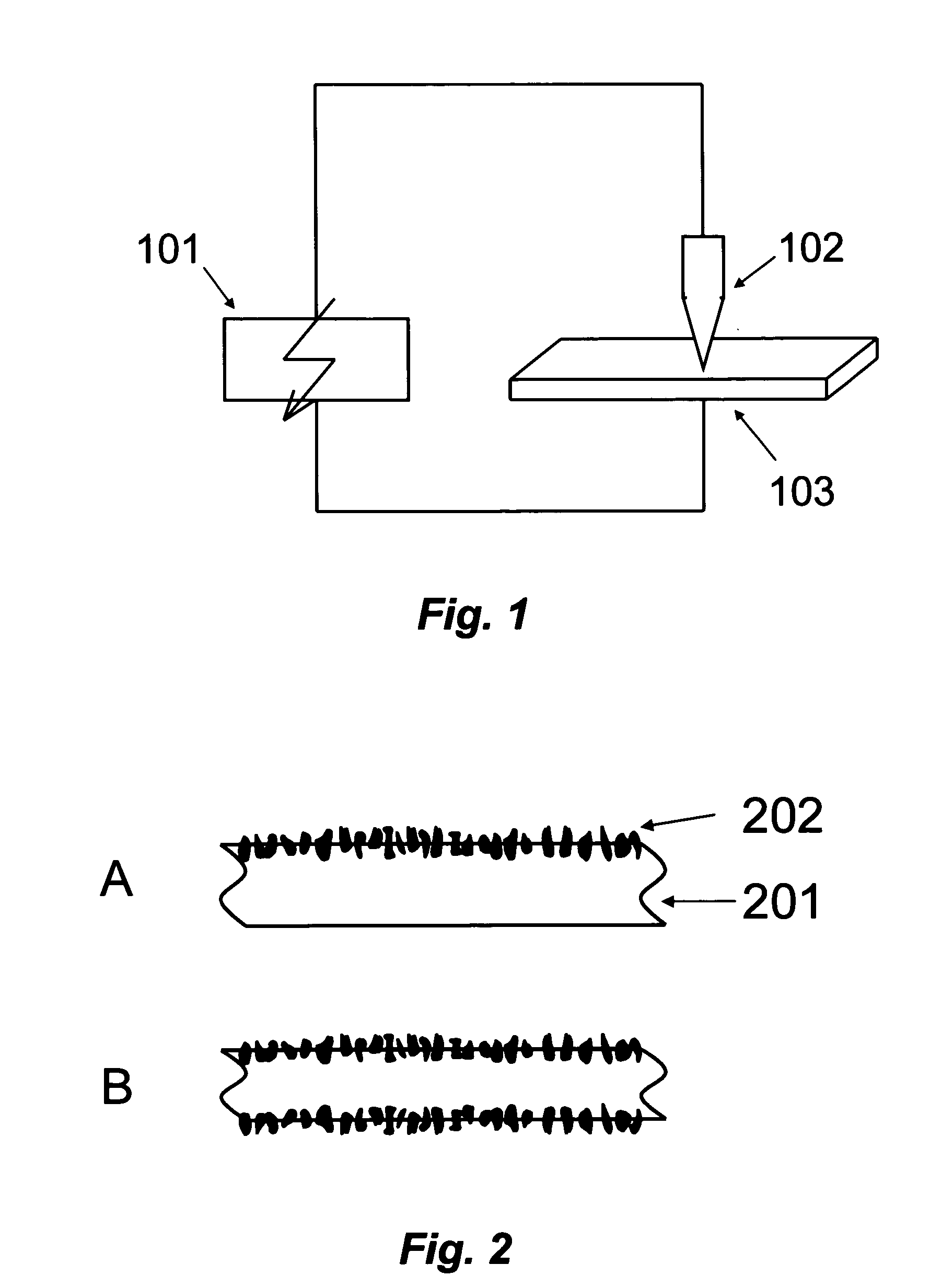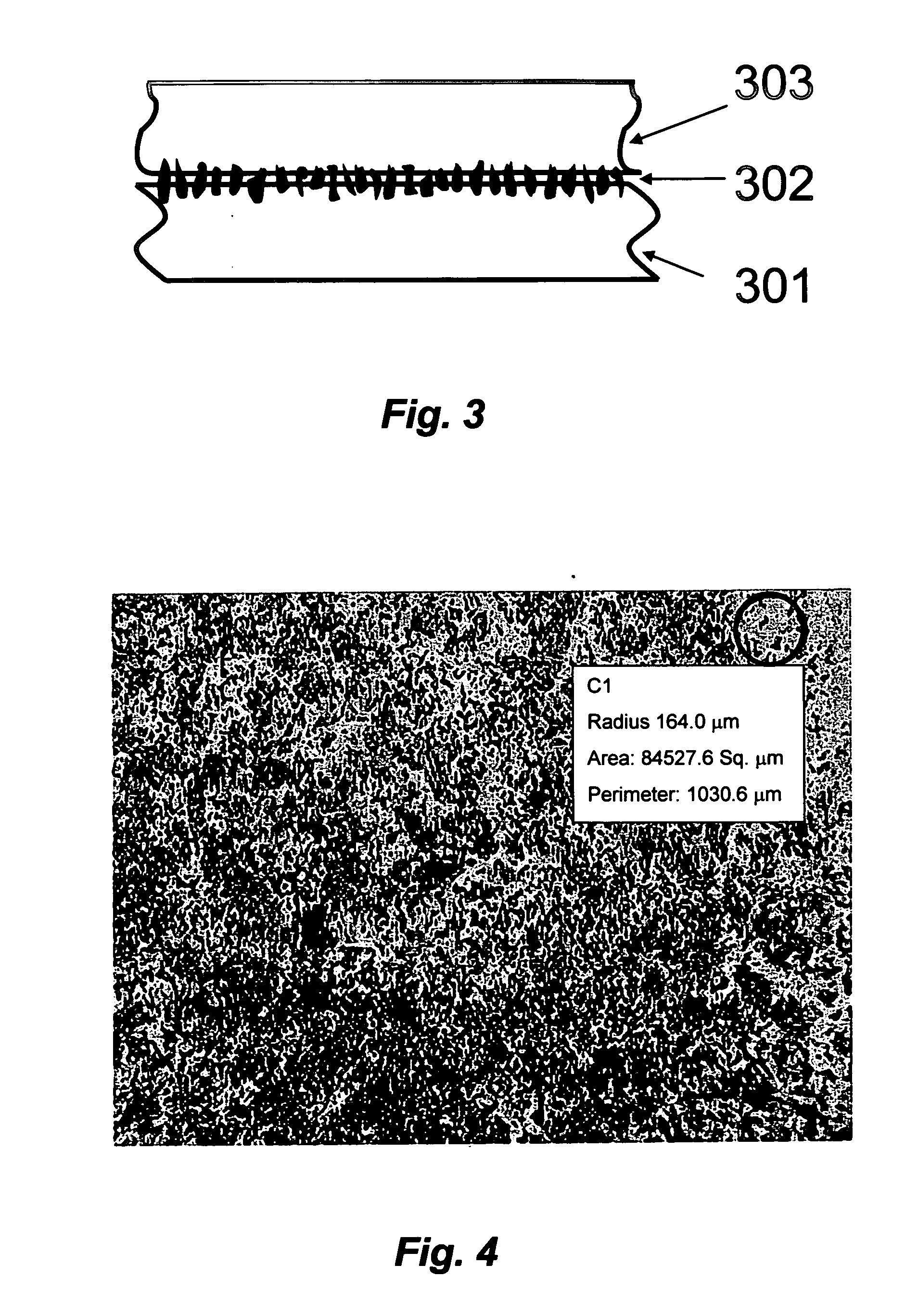Method of fabrication electrodes with low contact resistance for batteries and double layer capacitors
a double-layer capacitor and electrode fabrication technology, applied in the direction of electrolytic capacitors, cell components, electrochemical generators, etc., can solve the problems of low rc constant value, low contact resistance, and insufficient resistance of carbon cloth used in such electrodes, so as to achieve low cost and still effective effect of low contact resistan
- Summary
- Abstract
- Description
- Claims
- Application Information
AI Technical Summary
Benefits of technology
Problems solved by technology
Method used
Image
Examples
example 1
[0030]Aluminum foil with the thickness 20 microns was pressed with a copper plate with the frame from stainless steel with a rectangular window 35×45 mm. With the help of an electro spark device, which included a positive electrode from graphite rod and negative electrode of aluminum foil, the aluminum foil was doped with the particles of graphite over the windows of the frame. The current of the process was 0.6 A. The duration was 6 minutes. As a result, a layer of graphite was fused into the surface of the aluminum. The thickness of this graphite layer was 3-5 microns. Onto the aluminum current collector with the graphite layer that was fused into the surface of the aluminum, a suspension of nano-porous carbon powder with PVDF binder was coated. The concentration of the binder was 10%. The method of coating was casting. After drying, and following forge-rolling, the thickness of the nano-porous carbon was approximately 100 microns. The resistance of electrode that was fabricated b...
example 2
[0031]Aluminum foil having a thickness of 60 microns was passed through rolls several times with emery paper to roughen the surface. Thereafter, the aluminum foil was pressed with a copper plate with the frame of stainless steel, with a rectangular window 35×45 mm. Using an electro-spark device that included a positive electrode comprising a graphite rod and a negative electrode that comprised said aluminum foil, the roughened aluminum foil was doped with particles of graphite over the windows of the frame. The electrical current of the doping process was between 0.6 A and 1.0 A. The duration of the process was 7 minutes. The resulting layer of the graphite was fused into the surface of the aluminum. The thickness of this graphite layer was 3-5 microns.
[0032]A suspension of nano-porous carbon powder with PTFE binder was disposed onto the aluminum current collector with the graphite layer that was fused into the surface of the aluminum. The concentration of the binder was 7%. The met...
example 3
[0033]The surface of an aluminum foil strip with thickness 60 micron was treated as described in Example 2. Thereafter, the aluminum foil was pressed with a copper plate and the surface of the aluminum foil was doped as described in Examples 1 and 2. The current of the doping process was between 0.6 A and 1.0 A. The duration of the process was 8 minutes. The thickness of the resulting graphite layer that was fused into the surface of the aluminum was 3-5 micron. Thereafter, a thin layer (1-2 micron) of acetylene black was disposed onto the surface. Thereafter, onto the fabricated surface that included aluminum and two layers of carbon, a suspension of nano-porous carbon powder with PTFE binder (7%) was coated using the method of forge-rolling. The resulting thickness of the nano-porous carbon was approximately 100 microns. The resistance of the electrode that was fabricated by the method describe above was measured. The method used for the resistance measurement is described below. ...
PUM
| Property | Measurement | Unit |
|---|---|---|
| Diameter | aaaaa | aaaaa |
| Electrical conductivity | aaaaa | aaaaa |
| Electrical resistance | aaaaa | aaaaa |
Abstract
Description
Claims
Application Information
 Login to View More
Login to View More - R&D
- Intellectual Property
- Life Sciences
- Materials
- Tech Scout
- Unparalleled Data Quality
- Higher Quality Content
- 60% Fewer Hallucinations
Browse by: Latest US Patents, China's latest patents, Technical Efficacy Thesaurus, Application Domain, Technology Topic, Popular Technical Reports.
© 2025 PatSnap. All rights reserved.Legal|Privacy policy|Modern Slavery Act Transparency Statement|Sitemap|About US| Contact US: help@patsnap.com



